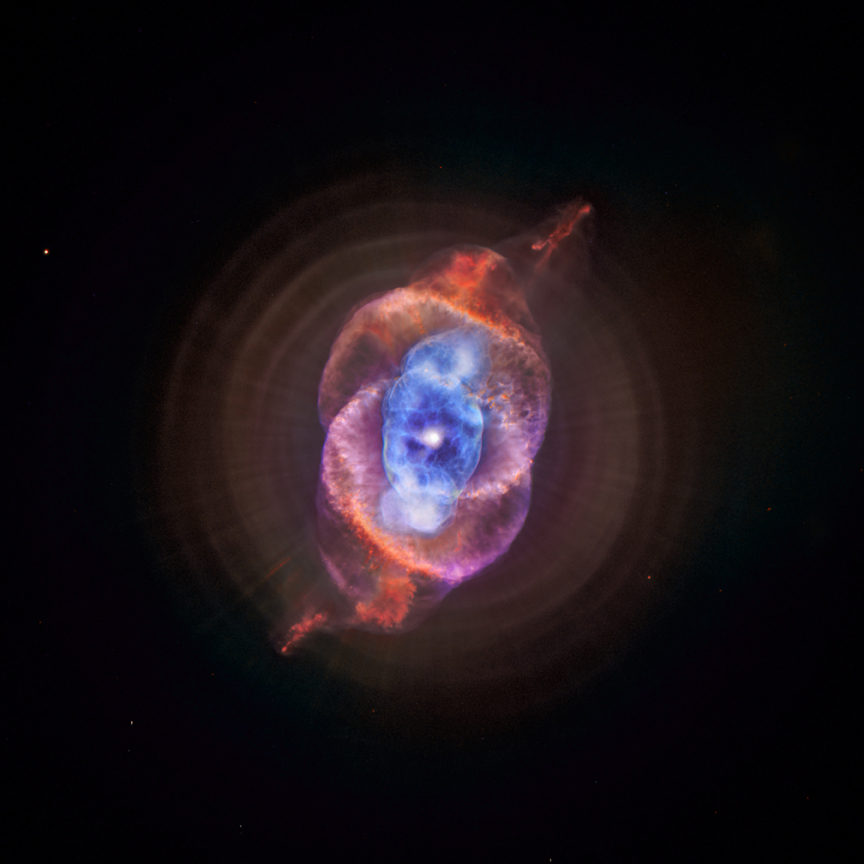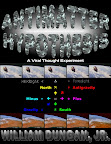

 Left: X-ray (NASA/UIUC/Y. Chu et al.), Right: X-ray/Optical Composite (X-ray: NASA/UIUC/Y. Chu et al., Optical: NASA/HST) NGC 6543 Cat’s Eye Nebula
Left: X-ray (NASA/UIUC/Y. Chu et al.), Right: X-ray/Optical Composite (X-ray: NASA/UIUC/Y. Chu et al., Optical: NASA/HST) NGC 6543 Cat’s Eye NebulaColor temperature correlates wavelength to the temperature of black body radiation. In the standard cosmlogical model, the detected x-rays depicted in these images represents a "multi-million-degree gas."
The antimatter hypothesis offers a different explanation. Pair-production converts energy into particle/antiparticle pairs. Matter is gravitationally attracted toward dense matter and repelled from dense antimatter. Antimatter is gravitationally attracted toward dense antimatter and repelled from dense matter. After a sun sized star stops nuclear fusion, the core of the star collapses into a white dwarf and surface layers are ejected. Pair production near the white dwarf star will attract the particle or antiparticle of the same parity of matter as the white dwarf and expel the other particle or antiparticle of the opposite parity of matter. Any expelled particle that interacts with it's related particle in the ejected material will annihilate both and generate two gamma rays. Through Compton scattering the gamma rays will interact with atoms in the ejected material and appear in a lower frequency range, which in the case of gamma rays are the X-rays detected and represented in these images.

| red | hydrogen-alpha |
| blue | neutral oxygen |
| green | ionized nitrogen |









No comments:
Post a Comment